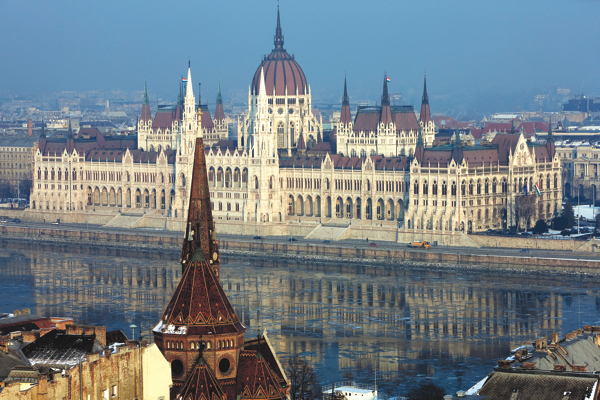The Main Facade of the Parliament

During the twelve years of the reconstruction of the facades of the Parliamenr facing the River Danube we had been in touch with almost every single stone component of the structure with the exception of the previously completed drum, the blocks housing the session rooms projecting out of the roofing and the northern tower. I do not know of any other building the reconstruction of which would be a similar process to this one: calculating it component by component, pulling it off, recarving and then reconstructing the entire stone facework, which is made possible by the rational order of stone carvings resembling that of steel structures.
The Parliament building is ŌĆ×perfunctoryŌĆØ, because its typified, but hand-carved stone facework is a characteristic product of the 19th century much in the same way as the contemporary cast or riveted steel structures said to be progressive ones or the facework of pressed bevelled brick used on the facades of the cortile much cheaper and more advantageous, because it is more durable) and the pyrogranite ornaments. Buildings similarly monumental, but constructed with craftsmanship technologies in the same period may as well be interpreted as transitory stages of the same, possible but interrupted evolutional tendency. The decline of craftsmanship technologies took place worldwide only after World War II to be replaced by technologies suited for serial or mass production. Unique in Europe, the school of stone-carvers and sculptors working on the reconstruction of the Parliament building are the inheritors of this craftsmanship culture.
Csaba Masznyik

Architects: Somorjai Antal, Katona Zsuzsa, Held L├Īszl├│n├®, Masznyik Csaba, Birk├Īs G├Ībor, G├Ībor M├│nika, Szab├│ ├ügnes, Niszler Katalin, D├│czi Andr├Īs, Strommer L├Īszl├│, Kovord├Īnyi Gy├Črgy
Statics: Kisfaludy Attila, Dr. G├Īlos Mikl├│s, Dr. Pinty┼æke G├Ībor
Contractor: Renesz├Īnsz Zrt.

